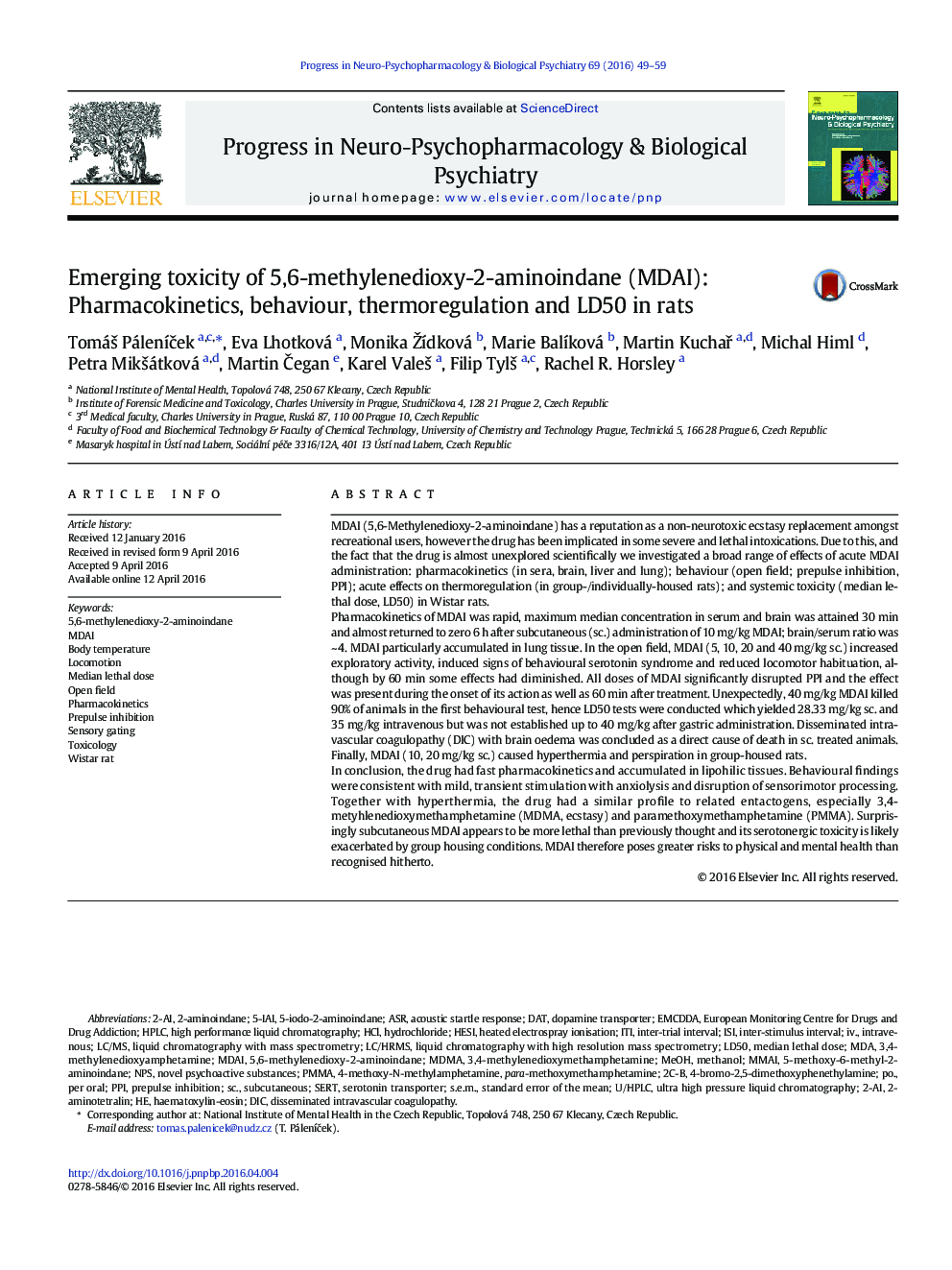| کد مقاله | کد نشریه | سال انتشار | مقاله انگلیسی | نسخه تمام متن |
|---|---|---|---|---|
| 2564684 | 1561025 | 2016 | 11 صفحه PDF | دانلود رایگان |

• MDAI induces locomotor stimulant effects and behavioural serotonin syndrome
• MDAI disrupts sensorimotor processing
• MDAI accumulates in the brain and liver compared to serum
• MDAI increases body temperature and induces profuse perspiration under aggregated conditions
• LD50 after sc. administration in aggregated condition is 28.33 mg/kg (symptoms of multiorgan failure, DIC and brain oedema).
MDAI (5,6-Methylenedioxy-2-aminoindane) has a reputation as a non-neurotoxic ecstasy replacement amongst recreational users, however the drug has been implicated in some severe and lethal intoxications. Due to this, and the fact that the drug is almost unexplored scientifically we investigated a broad range of effects of acute MDAI administration: pharmacokinetics (in sera, brain, liver and lung); behaviour (open field; prepulse inhibition, PPI); acute effects on thermoregulation (in group-/individually-housed rats); and systemic toxicity (median lethal dose, LD50) in Wistar rats.Pharmacokinetics of MDAI was rapid, maximum median concentration in serum and brain was attained 30 min and almost returned to zero 6 h after subcutaneous (sc.) administration of 10 mg/kg MDAI; brain/serum ratio was ~ 4. MDAI particularly accumulated in lung tissue. In the open field, MDAI (5, 10, 20 and 40 mg/kg sc.) increased exploratory activity, induced signs of behavioural serotonin syndrome and reduced locomotor habituation, although by 60 min some effects had diminished. All doses of MDAI significantly disrupted PPI and the effect was present during the onset of its action as well as 60 min after treatment. Unexpectedly, 40 mg/kg MDAI killed 90% of animals in the first behavioural test, hence LD50 tests were conducted which yielded 28.33 mg/kg sc. and 35 mg/kg intravenous but was not established up to 40 mg/kg after gastric administration. Disseminated intravascular coagulopathy (DIC) with brain oedema was concluded as a direct cause of death in sc. treated animals. Finally, MDAI (10, 20 mg/kg sc.) caused hyperthermia and perspiration in group-housed rats.In conclusion, the drug had fast pharmacokinetics and accumulated in lipohilic tissues. Behavioural findings were consistent with mild, transient stimulation with anxiolysis and disruption of sensorimotor processing. Together with hyperthermia, the drug had a similar profile to related entactogens, especially 3,4-metyhlenedioxymethamphetamine (MDMA, ecstasy) and paramethoxymethamphetamine (PMMA). Surprisingly subcutaneous MDAI appears to be more lethal than previously thought and its serotonergic toxicity is likely exacerbated by group housing conditions. MDAI therefore poses greater risks to physical and mental health than recognised hitherto.
Journal: Progress in Neuro-Psychopharmacology and Biological Psychiatry - Volume 69, 1 August 2016, Pages 49–59